Rising Damp Solutions In Sydney
We Specialise In Commercial & Residential Damp Proofing
What Is Rising Damp?
Rising damp is a common issue that many homeowners face.
It occurs when moisture from the ground rises up through the walls of a building by capillary action, causing damage and decay.
This can occur in buildings where the damp proof course (DPC) is missing, damaged, or ineffective. A damp proof course is a barrier, usually made of a water-resistant material, that is built into the structure of a wall to prevent water from rising up from the ground.
Understanding the causes and signs of rising damp is crucial in order to spot it, correctly diagnose it and then address the problem.
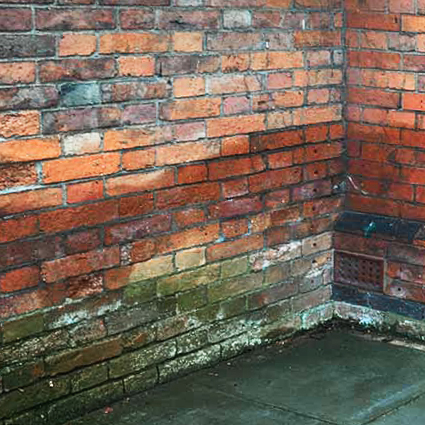
Causes of Rising Dampness
Understanding the causes of rising damp will allow you to address this issue effectively using the right solution.
Rising damp occurs when groundwater rises up through porous materials such as bricks and mortar. This can happen due to various factors, including a lack of damp-proof course (DPC) or a damaged DPC, which is a layer of waterproof material installed in walls to prevent moisture from rising.
Other causes may include bridging, where the DPC is bypassed by materials such as soil or debris, or capillary action, where moisture is drawn up through the materials by suction.
By identifying the specific cause of rising damp, you can determine the most suitable solution, such as injecting a chemical DPC into the affected walls to create a barrier against moisture.
Is Rising Damp a Serious Problem?
Rising damp can be a serious issue if left untreated, although the level of seriousness can vary depending on the extent of the problem and the length of time it has been occurring. Here are the potential problems that rising damp can cause:
- Over a long period, rising damp can weaken building materials like brick and mortar, potentially compromising the structural integrity of the building.
- Dampness can spoil the internal finishes, like paint and plaster, and can cause wallpaper to peel. The appearance of “tide marks” of salts on the walls is another aesthetic issue that can be difficult to remedy without treating the underlying cause.
- Damp conditions are conducive to the growth of mold and mildew, which can cause or exacerbate respiratory issues, allergies, and other health problems. This is particularly a concern for individuals with pre-existing health conditions, the elderly, and children.
- The presence of rising damp can significantly reduce the value of a property and may make it difficult to sell. Potential buyers are often reluctant to purchase a property with a known damp problem due to the costs and complexities associated with fixing it.
- Over time, the costs of dealing with the symptoms of rising damp can accumulate. Regularly replacing damaged plaster, repainting walls, or replacing floor coverings can be costly.
Damp walls are less effective at insulating a property, meaning that your heating or cooling systems will need to work harder to maintain a comfortable temperature, increasing your energy bills.
Signs & Symptoms of Rising Damp
One way to identify the presence of rising damp is by looking out for visible signs such as peeling wallpaper or blistering paint on the walls.
These signs occur because when moisture rises from the ground, it carries with it salts and minerals that can cause the paint to bubble and the wallpaper to peel.
Another sign of rising damp is the appearance of a tide mark on the affected wall, usually at a height of around one meter. This mark is caused by the moisture evaporating and leaving behind the salts and minerals.
Additionally, a musty smell or damp odour in a room can also indicate the presence of rising damp.
Rising Damp on Internal Walls
Identifying rising damp on internal walls can require some observation and inspection. While professional diagnosis is the most reliable way to ascertain if you have a rising damp problem, there are several signs that may suggest its presence:
Visual Indicators:
- Tide Marks: You might see a ‘tide line’ of salts or brown staining at the lower part of the wall. This often occurs up to about 1 meter from the ground but can vary.
- Peeling Paint or Wallpaper: If the paint or wallpaper is bubbling, flaking, or peeling away from the wall near the floor, this may be a sign of rising damp.
- Damaged Plaster: Look for plaster that is discoloured, crumbling, or feels wet to the touch.
- Visible Mold: Dark mold patches or a musty smell are signs of excessive moisture, which could be due to rising damp.
- Rotting Skirting Boards or Flooring: Wooden elements near the floor like skirting boards or wooden floorboards may show signs of rot.
Sensory Indicators:
- Musty Smell: A musty, mouldy smell is often indicative of some kind of damp issue, potentially including rising damp.
- Cold or Wet Walls: Walls may feel cold or wet to the touch, more so near the bottom.
- Indoor Air Quality: In extreme cases, persistent health issues like coughing or respiratory problems among the occupants may suggest poor indoor air quality due to dampness.
Professional Verification:
- Moisture Meter: A professional may use a moisture meter to assess the moisture content in the wall. High readings at the lower parts of the wall that decrease as you move upwards can indicate rising damp.
- Building Survey: A thorough building survey by a certified damp proofing specialist is the most reliable way to identify rising damp and distinguish it from other forms of damp like condensation or penetrating damp. This is something we can perform for you if you suspect your building has rising damp.
Rising Damp on External Walls
Identifying rising damp on external walls involves a similar process to diagnosing it on internal walls, although some symptoms may manifest differently. It’s always recommended to consult professionals for an accurate diagnosis, but you can look for the following signs that could indicate the presence of rising damp on the exterior walls of a building:
Visual Indicators:
- Efflorescence: This is a powdery, often white deposit of salts on the surface of the brick or stone. These salts are often left behind when water evaporates from the wall.
- Discoloration: You may notice that the external walls are discoloured, usually darker near the base. This is because the moisture carries soil and salts up the wall.
- Sporadic Green Algae or Moss: The presence of green algae or moss, particularly near the base of a wall, may indicate excess moisture being drawn up the wall from the ground.
- Damaged Mortar Joints: Over time, the moisture can weaken the mortar joints between bricks or stones, causing them to deteriorate.
- Spalling: This is the chipping or flaking of the surface of bricks or stones. When water in the brickwork freezes and thaws, it can cause the brick to spall.
- Paint Damage: If the external walls are painted, check for bubbling, blistering, or peeling paint, which could indicate moisture within the wall.
- Tide Marks: Similar to internal walls, you might see tide marks or bands of damp, often appearing as a stained area, usually lower down on the wall.
Sensory Indicators:
- Wet to Touch: If the lower part of the external wall feels wet compared to higher up the wall, it might indicate rising damp.
- Musty Smell: A musty, damp odor near the wall could also be an indicator, although this is usually more noticeable on internal walls.
Professional Verification:
- Moisture Meter: A professional can use a moisture meter on the external wall to assess the moisture levels, providing a more scientific confirmation of rising damp.
- Detailed Survey: A comprehensive survey carried out by a certified damp-proofing specialist can reliably distinguish between rising damp and other moisture issues like penetrating damp. This is something we are able to carry out if you believe your building may have rising damp issues.
Rising Damp In Brickwork
Identifying rising damp in brickwork involves observing the physical and visual characteristics of the bricks and mortar. While the surest way to confirm rising damp is through a professional survey, you can look for several telltale signs yourself:
Visual Indicators:
- Efflorescence: A common indicator of rising damp in brickwork is the appearance of a white, powdery substance on the surface of the bricks. This is caused by salts brought up by the rising moisture and left behind as the water evaporates.
- Tide Marks: You may notice darker, discoloured areas, often forming a horizontal ‘tide mark,’ usually up to a meter above the ground but sometimes higher. These are created by ground salts carried by the moisture as it rises.
- Damaged Mortar: The mortar between bricks may begin to crumble or disintegrate due to the effects of the moisture and salts.
- Spalling or Flaking: If the surface of the brick starts to chip away or flake, this can be a sign of rising damp. This is especially the case if the brick feels damp or soft to the touch.
- Mold or Algae Growth: Damp conditions are conducive to biological growth. You may see signs of mold, mildew, or algae, particularly at the base of the wall.
- Color Changes: Wet bricks may look darker than dry bricks, and this color difference can be more apparent after periods of dry weather.
Sensory Indicators:
- Touch: The bricks and mortar may feel damp or wet, especially closer to the ground.
- Smell: A musty, earthy smell could indicate the presence of moisture within the brickwork.
Professional Verification:
- Moisture Meter: A damp specialist might use a moisture meter to gauge the moisture levels in the bricks. A pattern of decreasing moisture levels as you move upwards is usually indicative of rising damp.
- Building Survey: A thorough inspection by a qualified professional is the most reliable way to identify rising damp and differentiate it from other damp-related issues like penetrating damp or condensation. This is something we are able to carry out for you.
How to Treat & Stop Rising Damp
When it comes to dealing with moisture creeping up your walls, there’s a secret weapon that can come to the rescue: DPC injections.
DPC stands for Damp Proof Course, and it is the best method used to treat rising damp.
As we already mentioned, rising damp occurs when groundwater is absorbed by the porous materials in a building, causing moisture to rise up through the walls.
DPC injections involve drilling holes into the affected walls and injecting a chemical solution that creates a barrier against moisture. This solution forms a waterproof layer that prevents water from rising further, not only stopping the damage but also helping to restore the integrity of the affected walls.
The injections are typically done at regular intervals along the affected walls to ensure complete protection.
DPC injections have proven to be an effective and long-lasting solution for treating rising damp, providing homeowners with a reliable way to eliminate dampness and protect their property.
The Process of DPC Injections
The process of DPC injections involves drilling holes into affected walls and injecting a chemical solution, creating a protective barrier against moisture.
To begin, a series of holes are drilled horizontally along the affected wall at regular intervals. These holes are typically around 12mm in diameter and spaced approximately 100-150mm apart.
Once the holes have been drilled, a chemical solution, usually a silicone-based or cream-based product, is injected into the wall using a pressure pump. The solution penetrates the porous masonry, forming a damp-proof course that prevents further moisture from rising up the wall.
After the injection, the holes are filled with mortar or a suitable filler, leaving the wall restored and protected against rising damp.
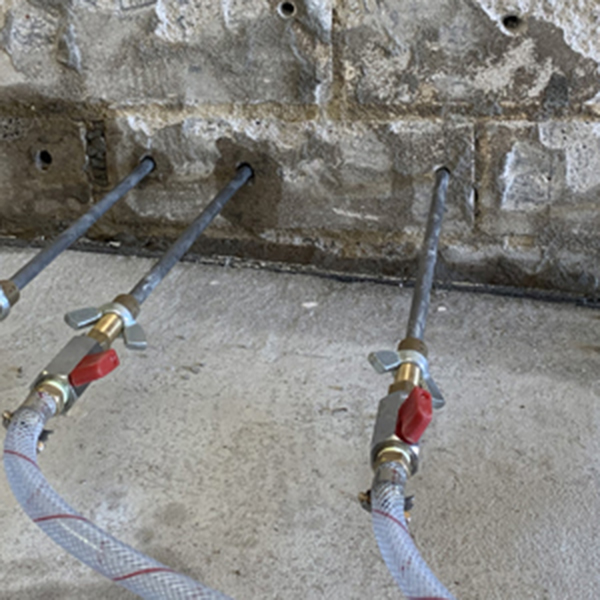
The Benefits of Using DPC Injections for Fixing Rising Damp
Using DPC injections offers a multitude of advantages for resolving the issue of moisture seepage in walls.
Firstly, DPC injections provide a long-lasting solution to rising damp by creating a waterproof barrier within the affected walls. This barrier prevents further moisture penetration, effectively stopping the dampness from spreading.
Additionally, DPC injections are a cost-effective method of treating rising damp compared to alternative solutions such as installing a new damp-proof course or conducting extensive structural repairs. The process is relatively quick and minimally invasive, causing minimal disruption to the occupants of the building.
Furthermore, DPC injections can be carried out on various types of walls, including brick, stone, and concrete.
DPC injections are a practical and efficient way to fix rising damp, ensuring a dry and healthy living environment.
We Can Help Resolve Rising Damp In Your Home Or Building!
As remedial building specialists, we offer rising damp solutions including DPC Injections in Sydney for residential and commercial buildings.
If you believe your property has rising damp and needs to be resolved, speak to us today.
We will be able to perform a professional evaluation to determine if the issue truly is rising damp, and advise you on the best course of action to resolve it given your particular circumstances.
FAQ About Rising Damp
Are there any alternative methods to fix rising damp apart from DPC injections?
Yes, there are alternative methods to fix rising damp apart from DPC injections. These include using waterproof coatings, installing a damp-proof membrane, improving ventilation, and repairing any leaks or cracks in the building. This is something we will discuss with you at the time, depending on your needs.
How long does it take for DPC injections to completely fix rising damp?
DPC injections typically take around 2-4 weeks to completely fix rising damp. The duration can vary depending on the severity of the issue and the size of the affected area.
Can DPC injections be used on all types of walls and structures?
DPC injections can be used on most types of walls and structures, providing an effective solution for rising damp. They are a versatile method that can be applied to various materials, including brick, stone, and concrete.
Are there any potential side effects or risks associated with DPC injections?
Not if the job is done properly. If the job is done incorrectly by someone who is not experienced, there is the potential for some risks such as damage to surrounding materials, temporary disruption during the injection process, and the possibility of inadequate treatment if not done properly.
Can DPC injections be used as a preventive measure to avoid rising damp in the future?
DPC injections cannot be used as a preventive measure to avoid rising damp in the future. They are only effective in treating existing cases of rising damp by creating a barrier against moisture.
Rising Damp Solutions We Have Implemented
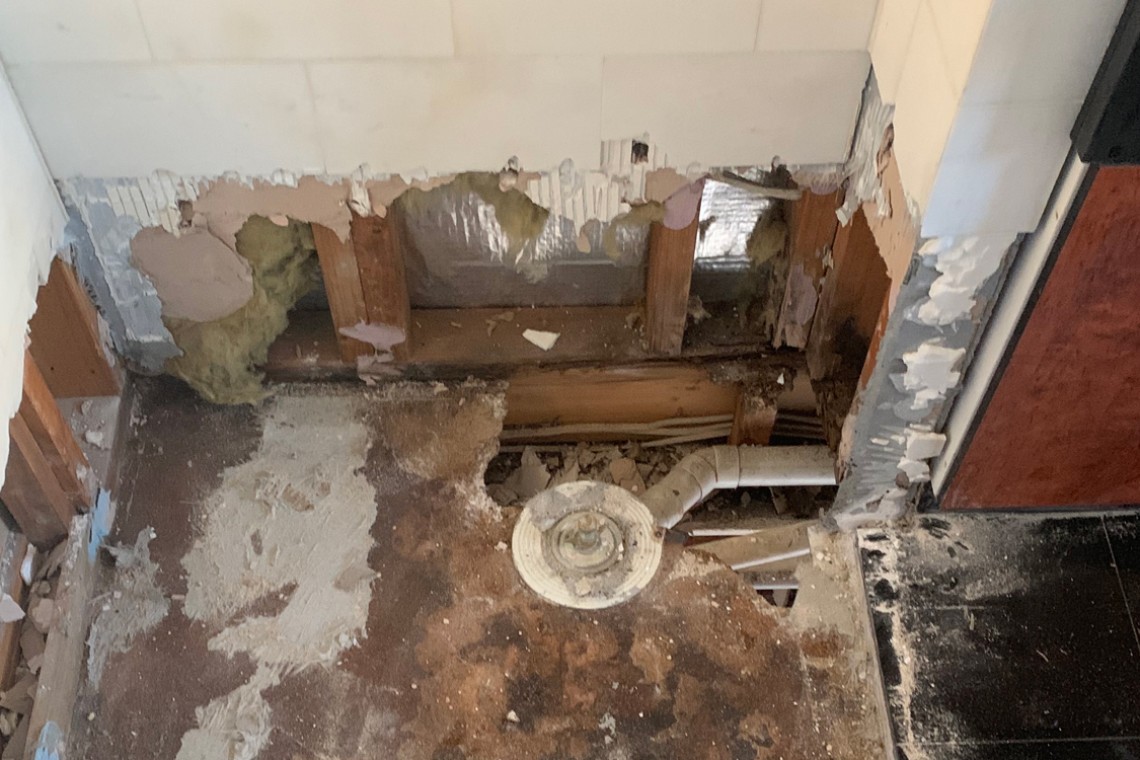
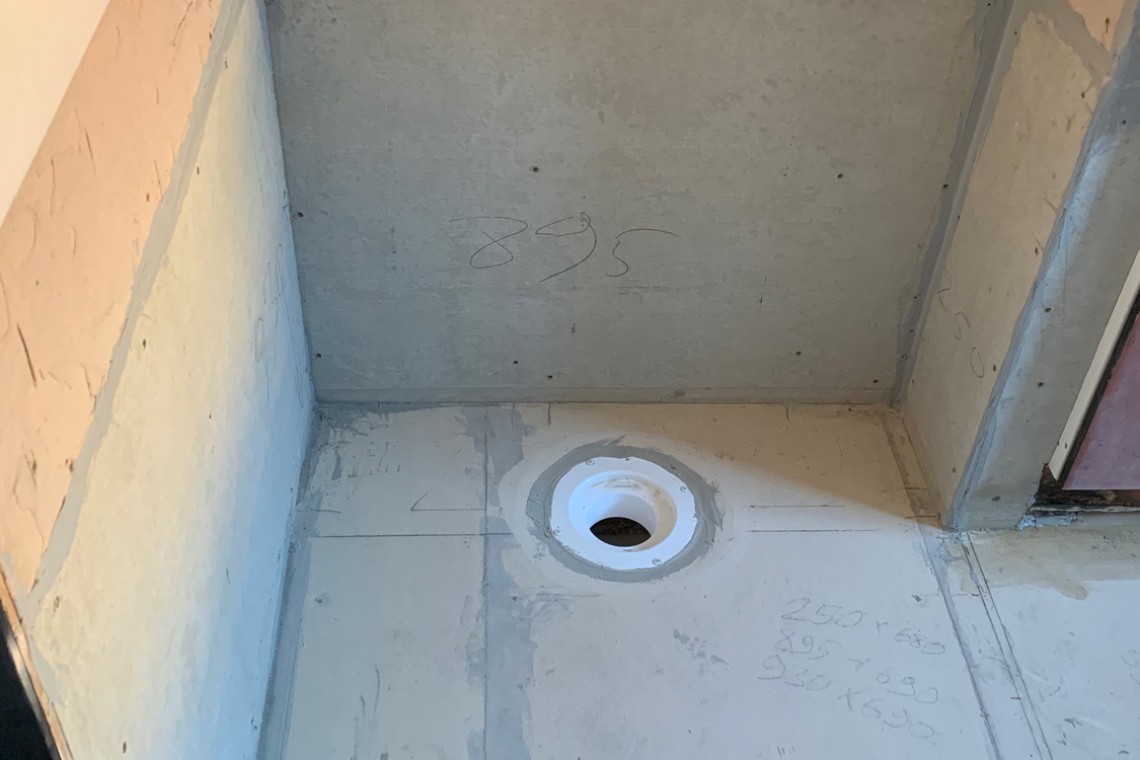
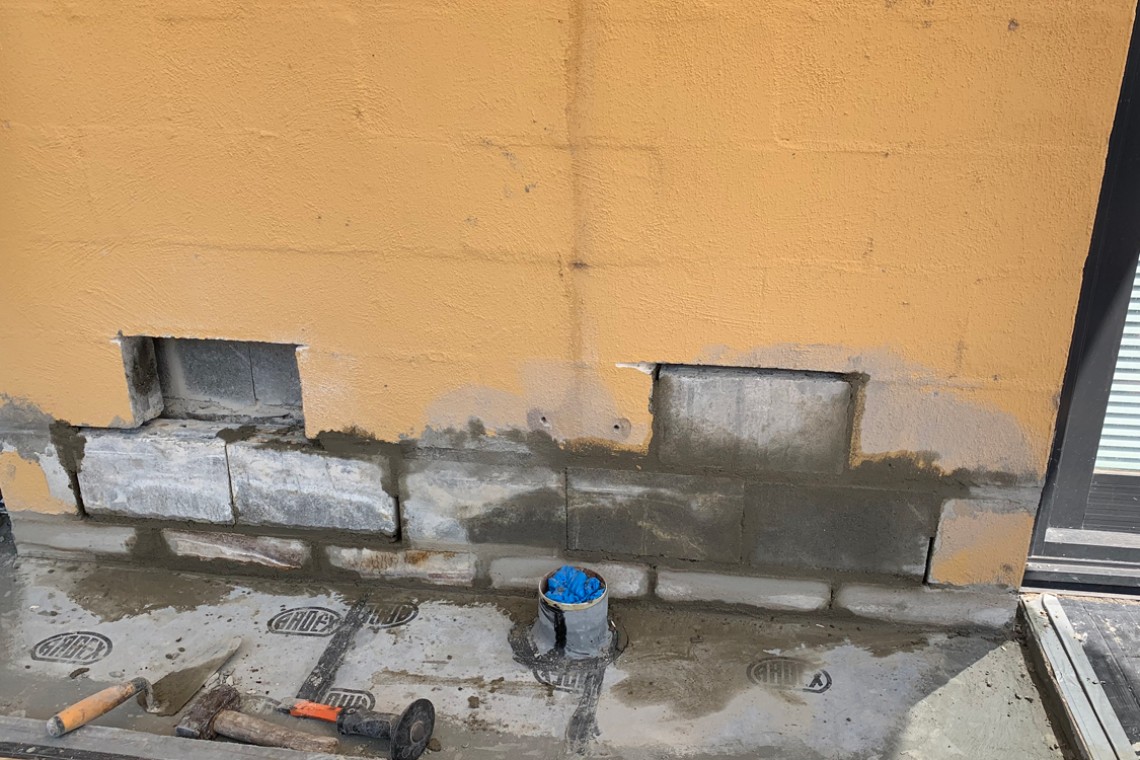
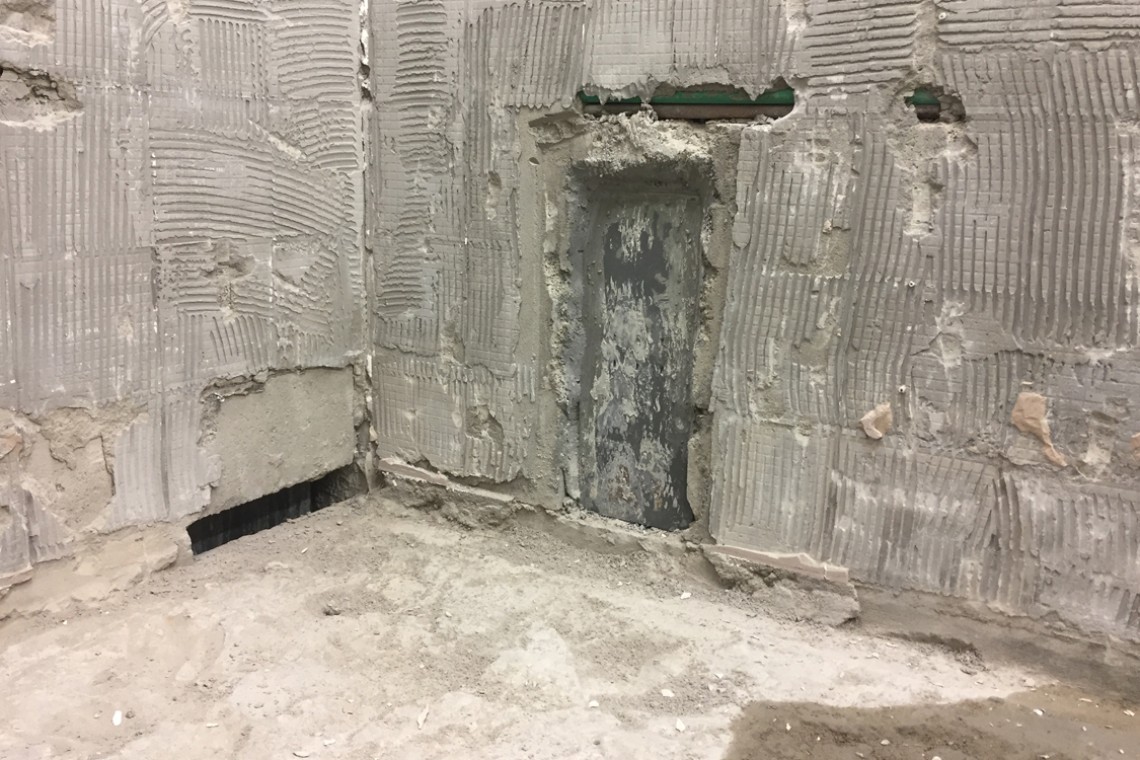
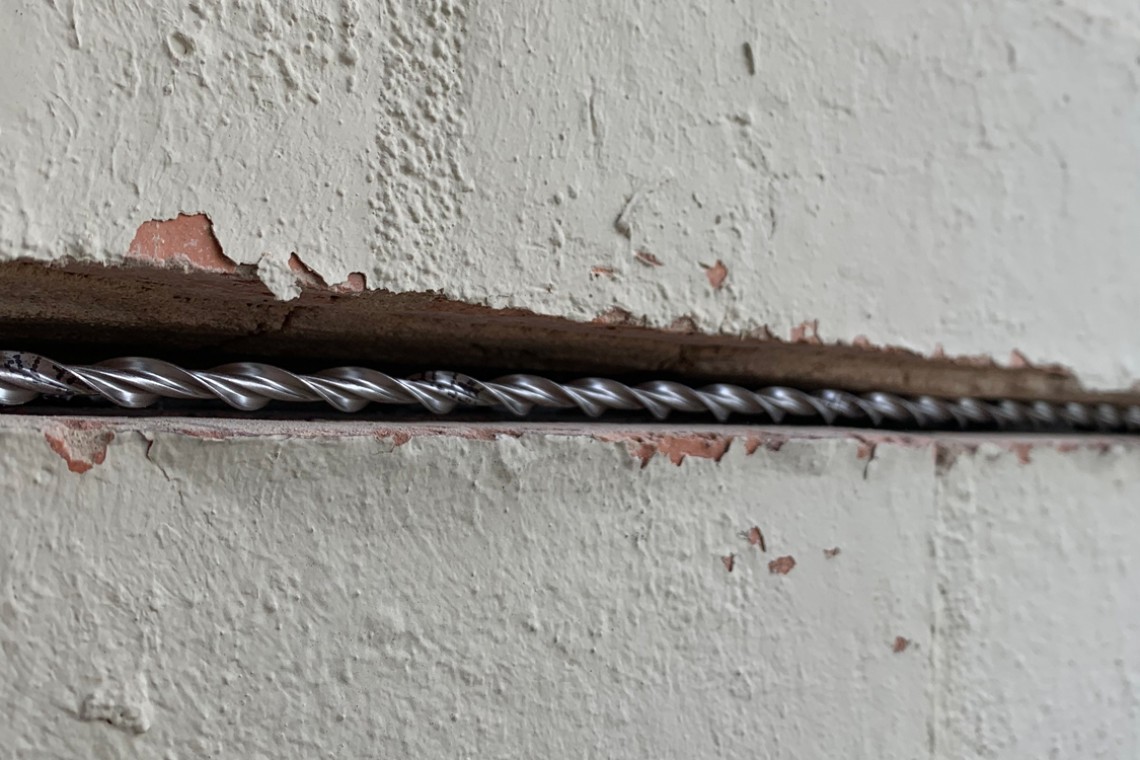
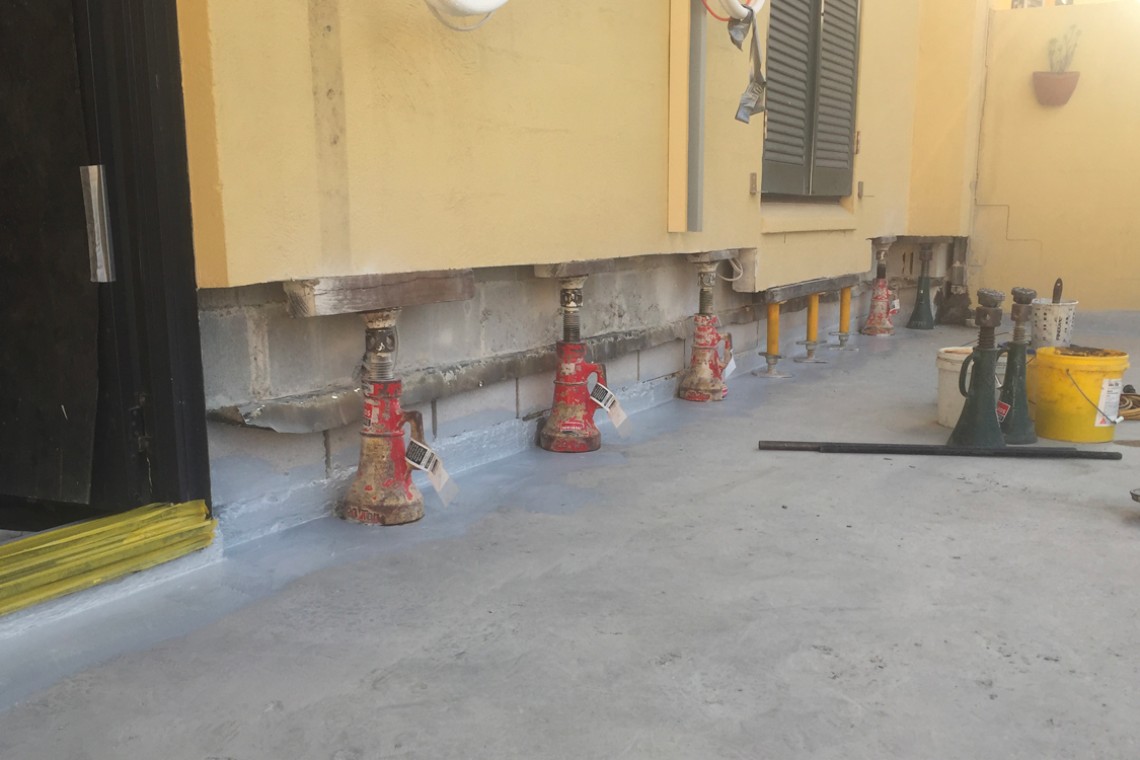
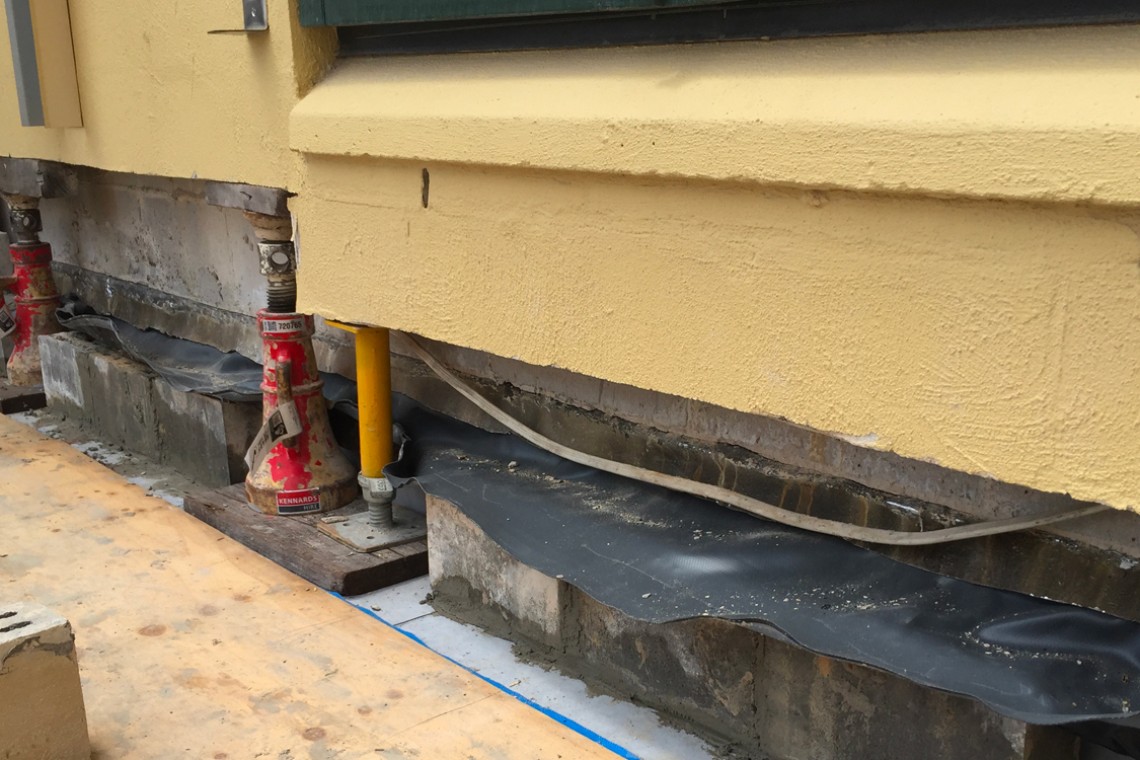
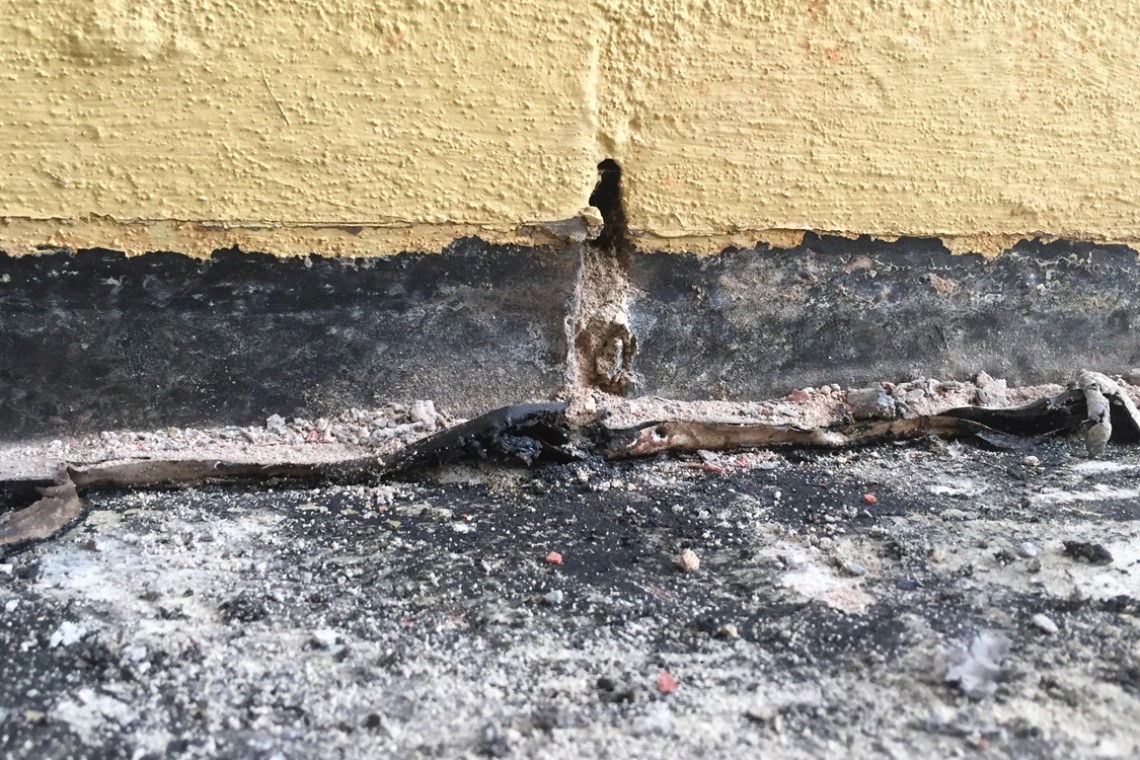
What Our Clients Say About Us
“I’ve had Predrag manage four projects for me for over four years, and I’ve been completely satisfied. Predrag was completely professional, starting with the quotes for the jobs he undertook, breaking them down into sections. He also has an eye for detail and makes suggestions for anything he feels needs attention. He’s punctual and reliable, and so I couldn’t recommend Predrag highly enough.”
“Predrag Loncar of SMR Builders was hired in March 2020 to carry out remedial repairs to our property, to reverse bad building practices during the original build 20 years ago, which had led to extensive damp problems in the walls. His initial inspection was detailed, wide-ranging and thorough. After we had accepted his quote, he made sure that he consulted and liaised with us at every stage of the work. When he opened the walls for repair, in several places, he discovered further problems which he carefully explained to us and then offered suggestions for repair. With Predrag and SMR Builders, you will get someone passionate about his work, who has a detectives’ nose for seeking out the best possible solution and who wants to achieve the best possible result. He is very aware that his work is in someone’s home, and he constantly stresses to his men to be respectful of their surroundings. We are very happy to say that the team of Christian the foreman, with Ivan and Caramba, were very pleasant to have around, and did not cause us any problems at all. We have no hesitation in recommending Predrag and SMR Builders; it would be very difficult to find a better builder for your remedial work.”
Contact Us Today
To contact us about resolving your rising dampness, either fill out the form below or use the call or email buttons to get in contact with us now!